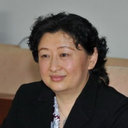[Simultaneous screening program for newborns hearing and ocular diseases].
关键词
抽象
OBJECTIVE
To explore the model and the feasibility of newborn hearing and ocular disease simultaneous screening program and to study the birth prevalence of newborn hearing loss and newborn ocular diseases.
METHODS
The universal newborn hearing screening (UNHS) was performed using transient otoacoustic emission (TEOAE) in well baby nursery and by a two-stage TEOAE and auto auditory brainstem response (AABR) protocol in neonatal intensive care unit (NICU). The UNHS was simultaneous done with newborn ocular disease screening program. The examination technical method was following: the response to light, external inspection of the eyes and lids, pupil examination, red reflex examination, funduscope examination after pupil dilation for referral (for all newborn in NICU). The infants who were referred by two-stage hearing screening and/or had high-risk factors of hearing loss received following-up and routine audiological evaluation and personalized intervention from 6 months to 3 years of age. The cases had positive sign and (or) abnormal results of the ocular disease screening were referred for further examination by pediatric ophthalmologists.
RESULTS
A total of 16 800 children born in Jinan Maternal and Child Hospital from October 1, 2002 to April 30, 2005. Of these infants, 15 398 cases (91.7%) had access to the simultaneous screening program for hearing and ocular diseases. The incidence of congenital sensorineural hearing loss (SNHL) among infants who did UNHS was 0.312% (48/15 398) in bilateral and 0.227% (35/15 398) in unilateral; Of the 4 cases of congenital SNHL complicated with newborn ocular diseases: 1 profound SNHL (bilateral), auditory neuropathy with congenital cataract (bilateral), 1 mild SNHL (bilateral) with membrana papillaris perseverance (left) and 1 mild SNHL (bilateral) with retina vein dilatation (bilateral), 1 mild SNHL (right) with persistent hyaloid artery (bilateral). In all 15 398 newborns, 15 neonates with congenital cataract were detected (22 eyes, 0.10%). Twenty seven neonates with less than 1500 g birth weight admitted to NICU, retinopathy of prematurity was detected in 3 neonates (6 eyes).
CONCLUSIONS
Hearing loss and ocular diseases was not rare in neonatal and infancy. Newborn hearing and ocular disease simultaneous screening program was not only feasible but also effective in detecting hearing loss and (or) ocular disorders. Early intervention was important for the prevention or treatment of neonatal hearing loss and (or) ocular diseases, such as newborn hearing loss with congenital cataract, retinopathy of prematurity and so on.




